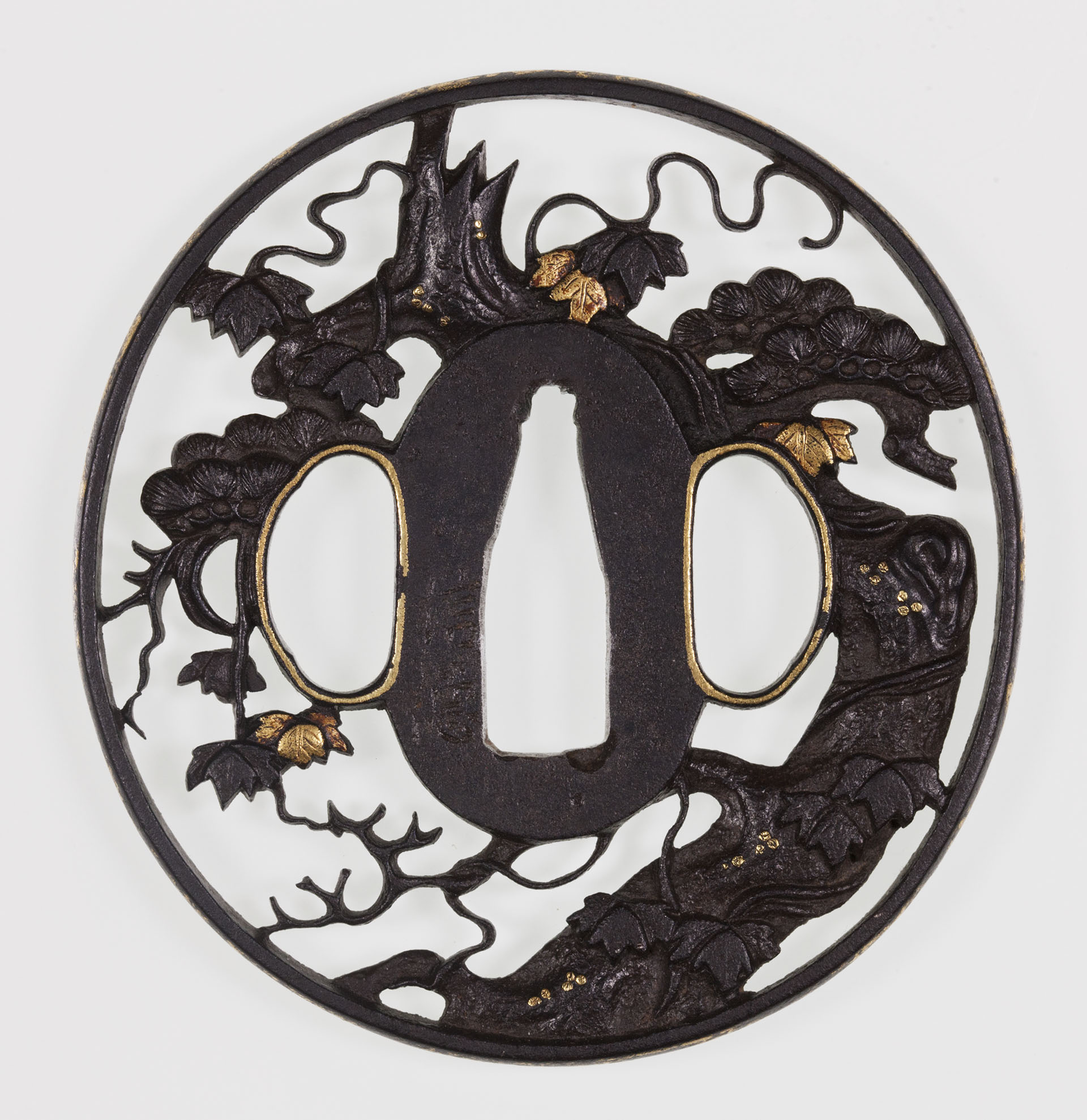I saw this tsuba in an online auction and while it’s not my usual sort of thing the signature looked interesting.
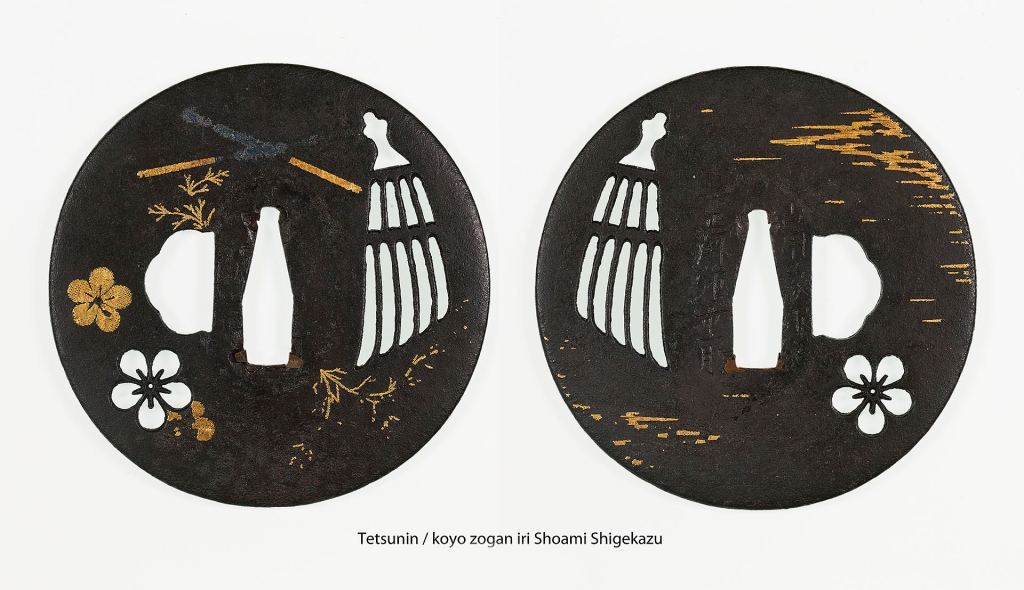
The nunome zogan is fairly typical of Kyo-Shoami, etc. and there is sukashi of a plum blossom and kumade (bamboo rake). The condition is good but not perfect, as this kind of inlay work rarely is.

The front is signed Tetsujin, or as some sources read Tetsunin. This group worked in Saga Hizen and elsewhere and made Kaneie style work as well as guards with mon sukashi designs. These tend to be uncomplicated, but are often more sophisticated than here.
The back has a longer inscription including the name Shoami Shigekatsu.
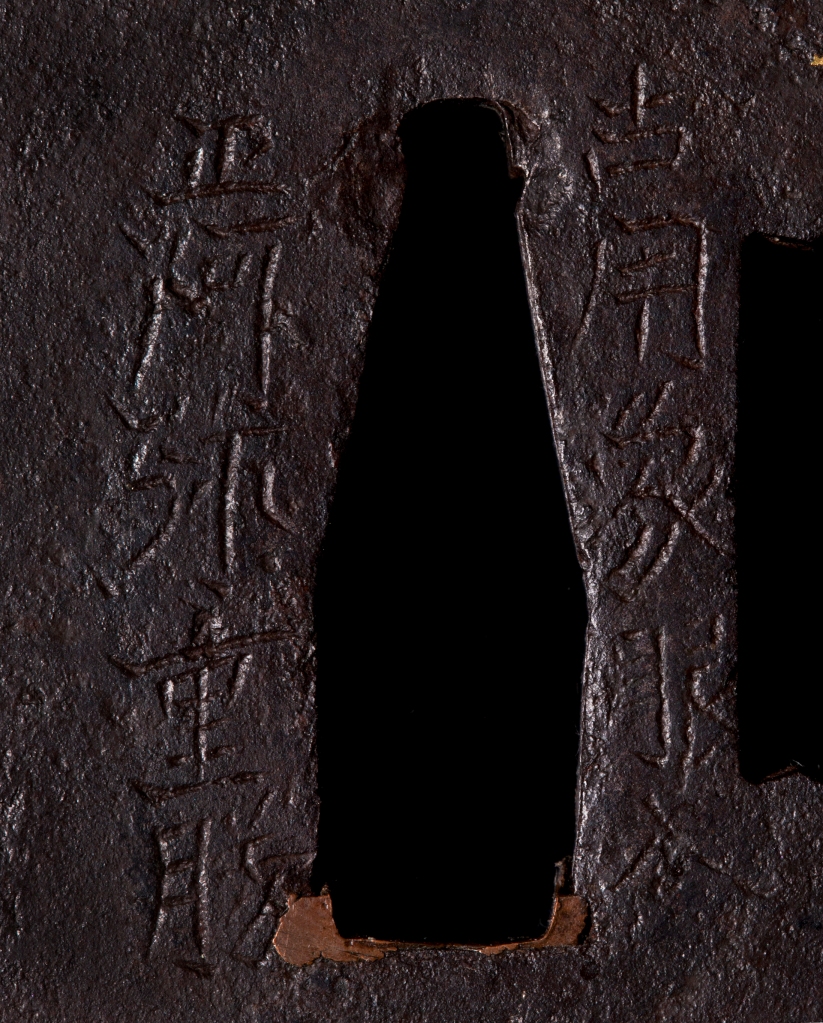
Haynes lists two Shoami Shigekatsu working in Aizu as H08296 and 7, one working in Bushu as H08298 and an Iyo Shoami man at H08299 . The earliest is described as working in Kyo-Shoami style nunome zogan ca. 1650-1725 and the next as a later generation of the first ca. 1750-75. Either of these is a good fit given the inlay work on this tsuba.
The Bushu Shigekatsu is described as working in Myochin style, which doesn’t sound like a likely candidate, but I will return to him with another related tsuba later on. The Matsuyama Shigekatsu is said to work in later Choshu style, so the less said about him the better.
So, what about that right-side inscription? I couldn’t tell what it might be in the online photos, but as far as I can tell now it’s “koyo zogan iri.” I lack anything like Japanese language skills, but my guess is that it means something like “old use, inlay added.” As in “I took an old tsuba by Tetsunin and tarted it up.” I’ve shown this guard to a couple of people who might know better and got shrugs and “I guess so.”
The sukashi design didn’t strike me as typical for Tetsujin work, which is usually not this static, but it’s hard to say how many people might be working under that name and how inspired they may have been. It does look like the signature chisel is wielded differently on the two sides, but hard to say what really went on. So, one of those projects that go on the back burner.

Recently browsing through the massive “elephant book” book that is Tsuba Shusei I came across the above. The arrangement is slightly different, but clearly there were unadorned Tetsujin version of this tsuba, and that one of them was in fact later decorated by Shigekatsu seems much more likely.
I wonder if the alteration to the kozuka ana was not just functional, but also by way of switching it to a shape usually associated with a kogai ana the later guy was marking his territory as being the new front side.
As always I am interested in other interpretations.
Now, back to that Bushu Shigekatsu… I also found this guard, also not in perfect shape:
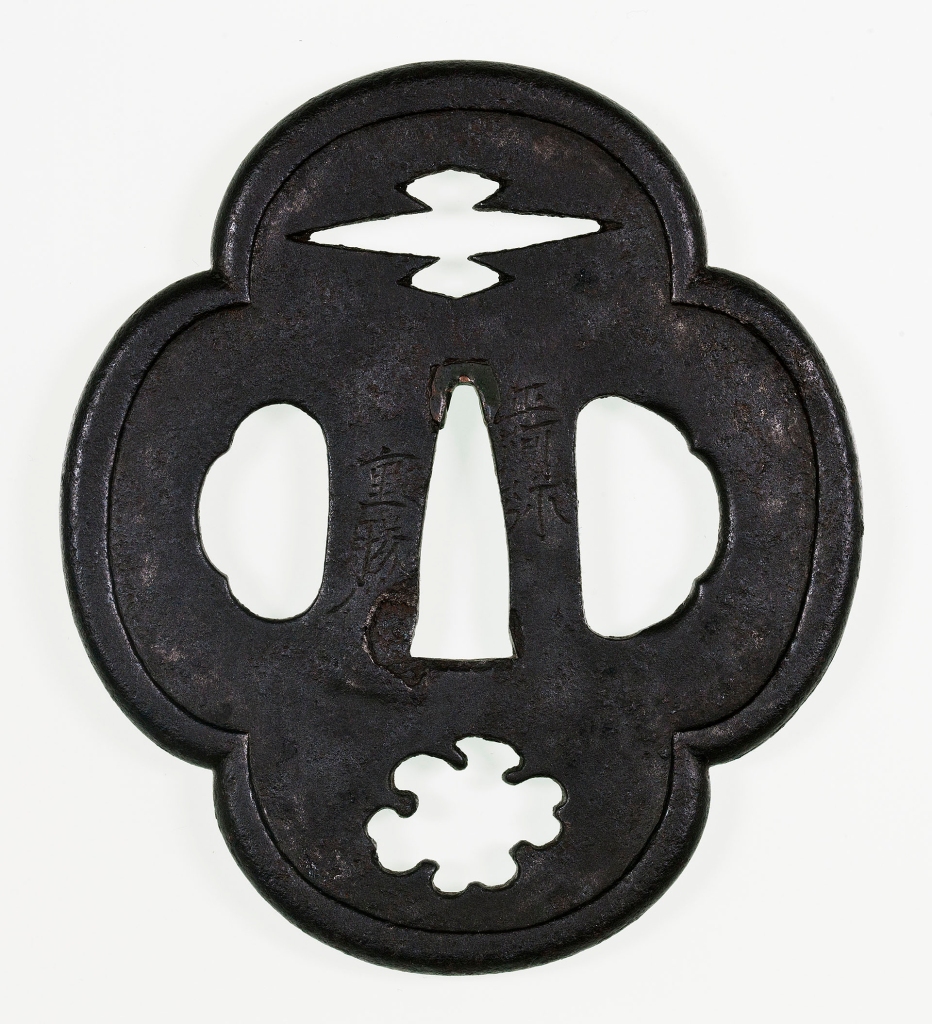
This would seem to fit with Bob’s H08298 man working in Myochin style, but comparing the signatures on the first guard and this one, they are very similar.
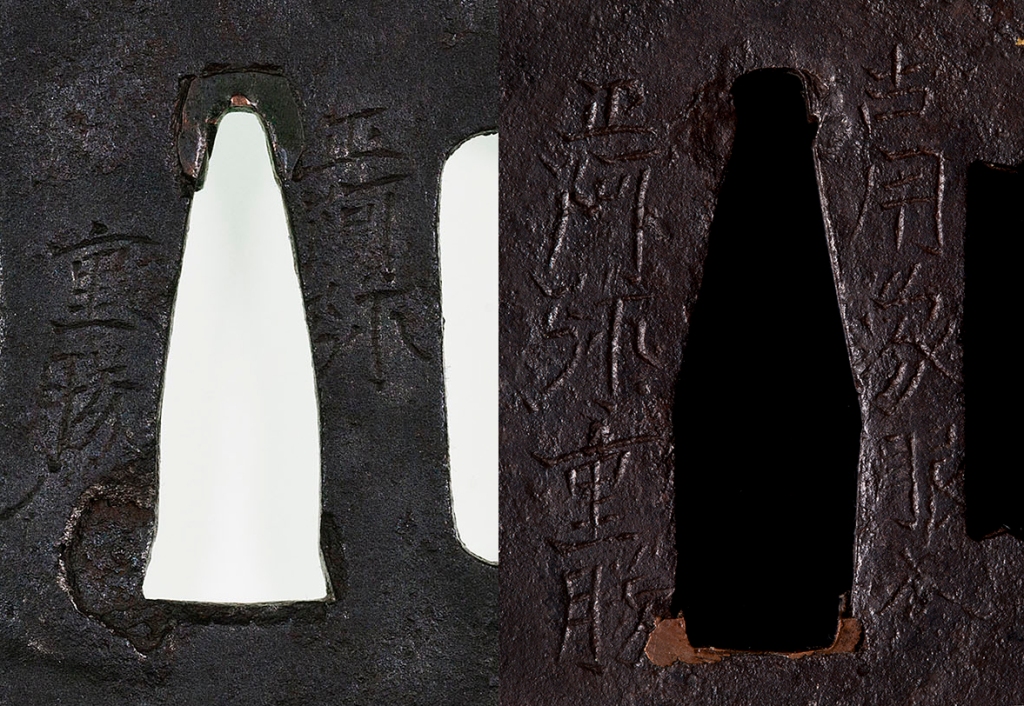
I suspect it is the same person, but no idea on the reported Aizu vs. Bushu locations. Maybe this shows he was better at nunome zogan than he was at making tsuba.
